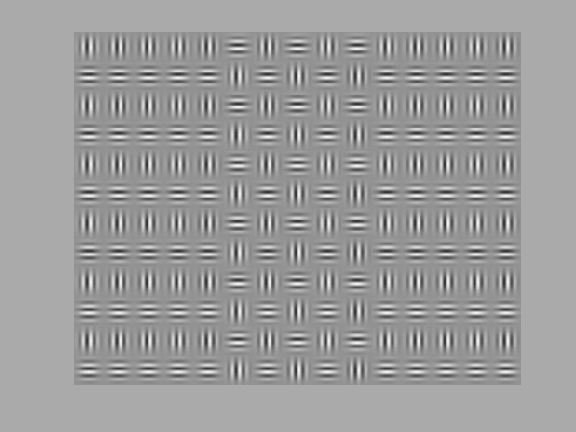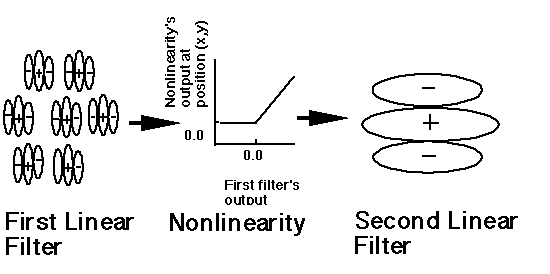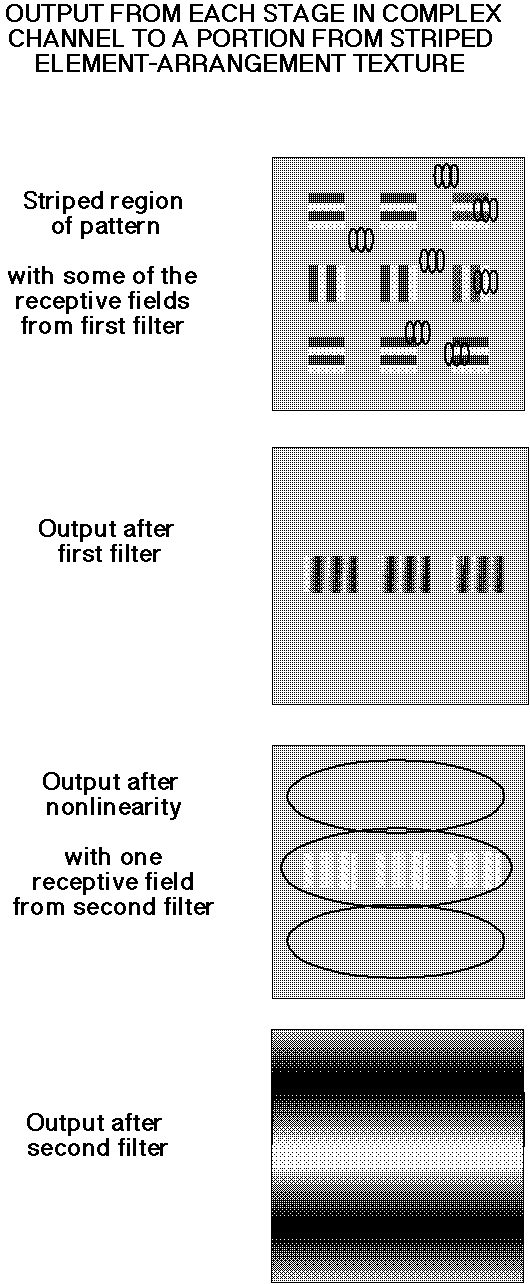
The texture pattern in this demonstration contains grating elements identical in spatial frequency but of perpendicular orientation arranged in checkerboard and striped regions as shown here:
NOTE: This is a monochromatic pattern although on some browsers it sometimes appears tinted.

In the demonstration of channel outputs below you will see just one small portion of the striped region. Analogous statements could be made about the checkerboard region.
The complex channel in this demonstration is like this:

The output of each stage in this complex channel
is shown next. There are in four panels giving:
-- the stimulus,
-- the output of the first linear filter,
-- the output after the intermediate nonlinearity, and then
-- the final output after the second linear filter.
(Some further explanation is below these four panels)

Some further notes about the four panels above.
The complex channel in this demonstration has vertically oriented receptive fields tuned to a relatively high spatial frequency at its first stage (a few of these receptive fields are sketched in the top panel).
Therefore it responds to the vertical but not the horizontal grating elements (second panel from the top). The response of each receptive field in the channel is shown in the second panel as bright point (at the position corresponding to the center point of the receptive field) if its response is greater than the baseline response or as a dark point if the response is less than baseline. (Baseline is shown as mid-gray).
This complex channel has a half-wave rectification as the intermediate nonlinearity. Thus all outputs below the baseline are set equal to the baseline, which is why the third panel (showing the output after the intermediate nonlinearity) shows no points darker than the baseline gray.
The second filter is characterized by big horizontal receptive fields, and so it can give a modulated response to the horizontal stripes. (Note that, if there were no intermediate nonlinearity, this second receptive field would just average over greater-than-baseline and less-than-baseline responses and its output would turn out to be at baseline at all positions -- that is, the bottom panel would be a solid gray.)
In short, this complex channel has responded to the horizontal stripes (relative low spatial-frequency) defined by vertical high-spatial frequency content.